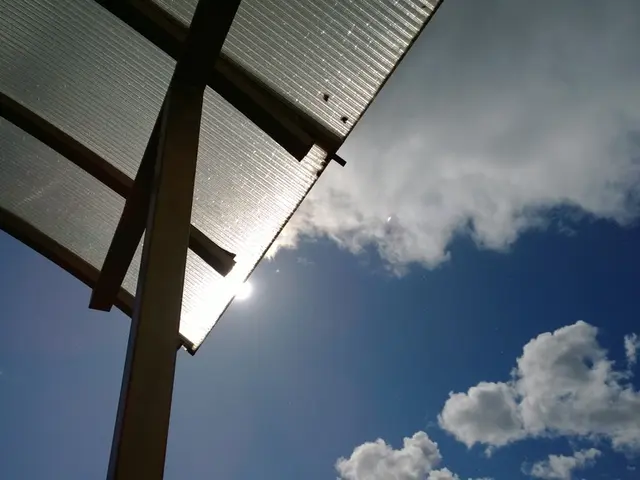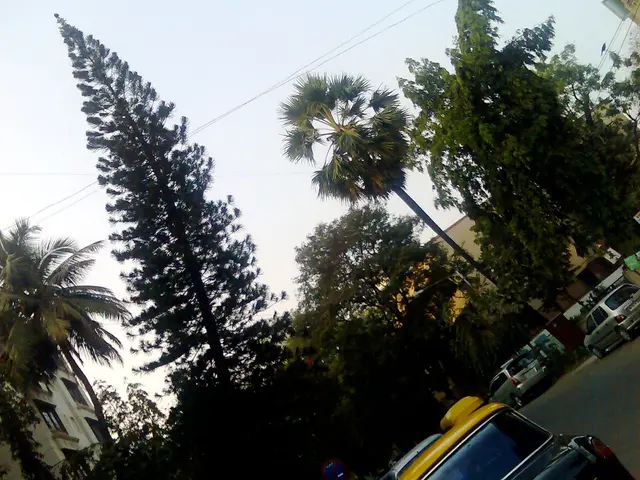Average Cost of Loft Conversions in 2025: Architects Reveal Their Recent Project's Expenses
Considering the ever-growing need for additional living space, loft conversions have emerged as an attractive option for homeowners seeking to make optimal use of their property's underutilized attic area. Instead of sacrificing valuable garden space with an extension, loft conversions can convert storage areas into bedrooms, bathrooms, or additional living areas, enhancing the overall livability of a home without significantly impacting its exterior. But what do these transformations cost?
While loft conversion ideas come with a varying price tag, the cost is largely dependent on the amount and nature of the space being converted. Generally, loft conversions cost between £1,500 to £3,000 per square meter, but this figure serves only as a starting point. To help homeowners gauge their financial capabilities, we've broken down the key factors that influence a loft conversion's budget.
Cost implications of a loft conversion
The cost of a loft conversion is influenced by several factors, making it a variable expense. A straightforward build, involving boarding, insulating, and plastering for a simple attic room, might cost as little as £1,500 per square meter. Alternatively, an ambitious project—complete with rooflights, a new bathroom, and high-quality fixtures—could set you back a figure closer to £3,000 per square meter.
Nick Smith, the founder of Smithers of Stamford and an interior design expert, emphasizes the importance of considering the entire process when budgeting for a loft conversion. "The price per square meter is just the tip of the iceberg," he warns. "It's not just about the basic construction; it's about the entire journey of transforming an empty space into a beautiful, functional, and valuable asset."
Steve Cox, founder of Cox Architects, shares his insights, stating that his two 2025 loft conversions (in London) came in at £3,000 and £4,800 per square meter, amounting to approximately £75,000 and £130,000 respectively, excluding VAT and professional fees.
Factors affecting the cost of a loft conversion
First and foremost, deciding on the purpose of the converted space is crucial. While additional bedrooms are common, you should also consider factors such as the necessity of a dormer for increased head height, a new en-suite bathroom, and the complexity of the lighting system, ventilation, insulation, and access to natural light.
The roof structure also plays a significant role in the cost of a loft conversion. Before starting the project, it is essential to ensure your roof is suitable and whether you prefer a flat or pitched roof. Homes with limited head height might require a complete roof replacement or an extension to meet building regulations. Mansard or hip-to-gable extensions will be more expensive, while dormer extensions offer a more cost-effective solution, albeit with less headroom.
Another essential aspect is the new staircase, which must be factored into the budget. The position for the new staircase must be determined, either by doubling back on your existing stairs from the landing or by sacrificing a box room for new access. Off-the-shelf straight pine stairs cost less than £1,000, while stairs with turns, better materials, and details will be more expensive. Additionally, building regulations require a minimum of 2 meters of head-height at any point, which should be considered during loft conversion planning.
Natural and artificial lighting should also be planned appropriately during the loft conversion, as good design can significantly improve the space, transforming it from an attic into a welcoming, habitable room. Rooflights often provide plenty of diffused natural light without compromising privacy, but they may require additional costs. Artificial lighting canrange from a simple plan with an overhead light and a few plugs to more complex designs, including downlights, wall lights, and so on, with the latter being more expensive. A bathroom will also necessitate the installation of an extractor ventilation system.
Plumbing should be considered even if a bathroom is not included in the new loft conversion for heating purposes. Options include extending an existing central heating system from a radiator below or opting for electric heating using underfloor or radiators. Adding new radiators to an existing heating system typically costs around £700, but your boiler's capabilities might need to be assessed to ensure it can accommodate an extra bedroom and bathroom.
Lastly, furnishing and finishing, such as flooring, plastering, skirting boards, built-in storage, bathroom tiling, and fittings, should also be budgeted for to ensure the converted space is ready for use as desired.
Frequently Asked Questions (FAQs)
Does the type of loft conversion impact the cost?
The complexity of the loft conversion directly affects its cost. A straightforward conversion with no extension or bathroom will be significantly cheaper than a roof replacement or hip-to-gable extension. A dormer extension falls somewhere in the mid-range price category. Nick Smith estimates that a dormer loft conversion will cost between £45,000 to £55,000 for a well-planned project, with costs likely to increase depending on the type and internal layout of the dormer.
It is essential to carefully consider your budget and carefully plan your loft conversion, taking into account all the factors discussed above. Double extensions can offer a more affordable alternative for additional bedrooms, bathrooms, and living areas, though they require sufficient space to be effective.
- The cost of a loft conversion can range from £1,500 to £3,000 per square meter, with the final figure dependant on the scope of the project, including furniture, tiles, and interior design elements.
- Nick Smith, an interior design expert, recommends considering the entire journey of transforming an empty space into a functional and valuable asset when budgeting for a loft conversion.
- Steve Cox, founder of Cox Architects, indicates that his two 2025 loft conversions in London cost approximately £75,000 and £130,000, excluding VAT and professional fees, demonstrating the potential high cost of loft conversions.
- Factors influencing the cost of a loft conversion include the purpose of the space, the roof structure, the new staircase, natural and artificial lighting, plumbing, and furnishing and finishing.
- A bathroom in the loft conversion will necessitate the installation of an extractor ventilation system, and heating options may require extending an existing central heating system or opting for electric heating.
- Homeowners should carefully plan their loft conversion, taking into account all factors, including the type of loft conversion, flooring, plastering, skirting boards, built-in storage, and bathroom tiling, to ensure the converted space is ready for use as desired.






